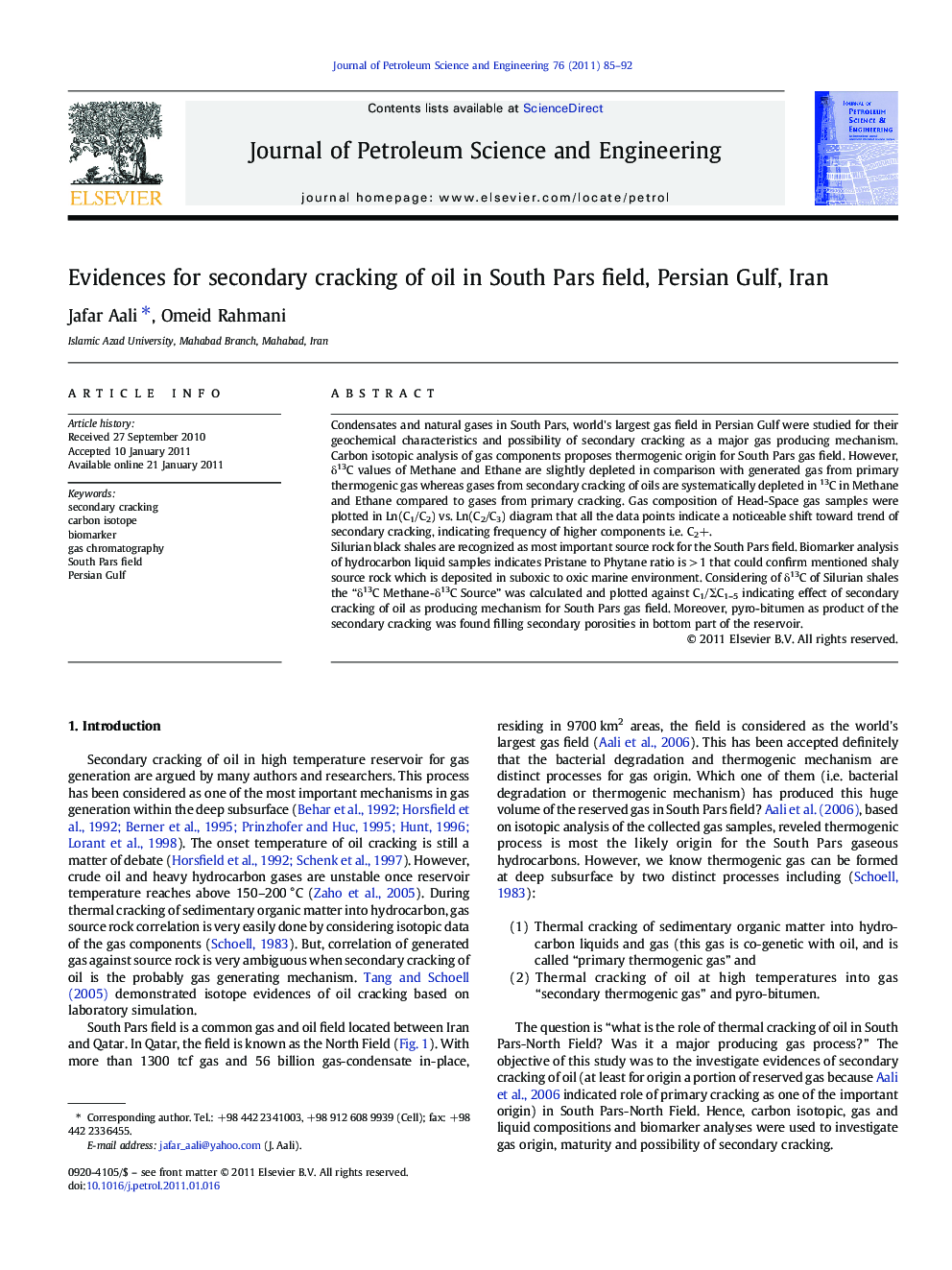| Article ID | Journal | Published Year | Pages | File Type |
|---|---|---|---|---|
| 1755877 | Journal of Petroleum Science and Engineering | 2011 | 8 Pages |
Condensates and natural gases in South Pars, world's largest gas field in Persian Gulf were studied for their geochemical characteristics and possibility of secondary cracking as a major gas producing mechanism. Carbon isotopic analysis of gas components proposes thermogenic origin for South Pars gas field. However, δ13C values of Methane and Ethane are slightly depleted in comparison with generated gas from primary thermogenic gas whereas gases from secondary cracking of oils are systematically depleted in 13C in Methane and Ethane compared to gases from primary cracking. Gas composition of Head-Space gas samples were plotted in Ln(C1/C2) vs. Ln(C2/C3) diagram that all the data points indicate a noticeable shift toward trend of secondary cracking, indicating frequency of higher components i.e. C2+.Silurian black shales are recognized as most important source rock for the South Pars field. Biomarker analysis of hydrocarbon liquid samples indicates Pristane to Phytane ratio is > 1 that could confirm mentioned shaly source rock which is deposited in suboxic to oxic marine environment. Considering of δ13C of Silurian shales the “δ13C Methane-δ13C Source” was calculated and plotted against C1/ΣC1–5 indicating effect of secondary cracking of oil as producing mechanism for South Pars gas field. Moreover, pyro-bitumen as product of the secondary cracking was found filling secondary porosities in bottom part of the reservoir.
Research Highlights►Carbon isotopic analysis of gas samples from South Pars. ►Secondary cracking as possible source of gas in South Pars field. ►Pristane to Phytane ratio (Pr/Ph = 1.82 in average).
